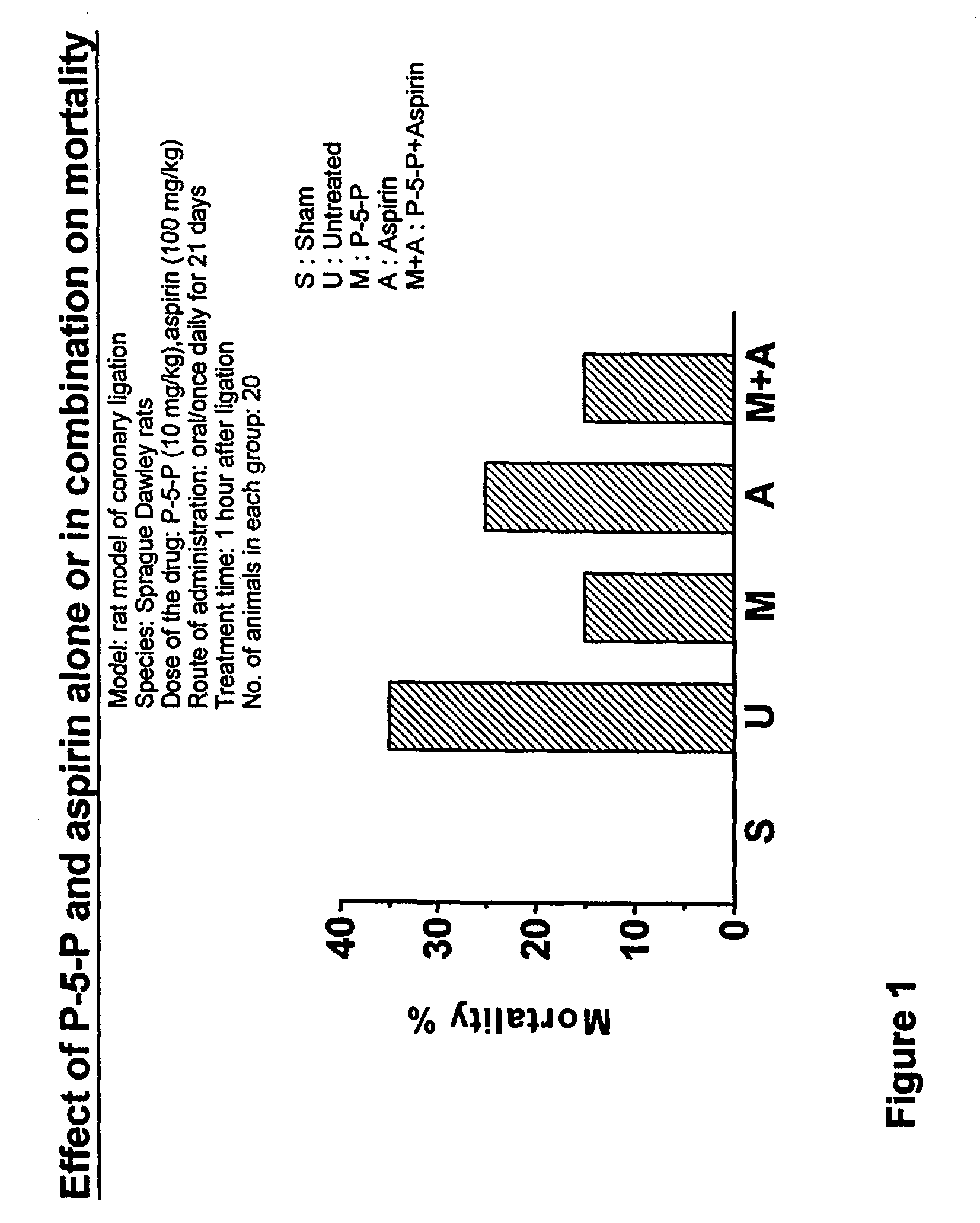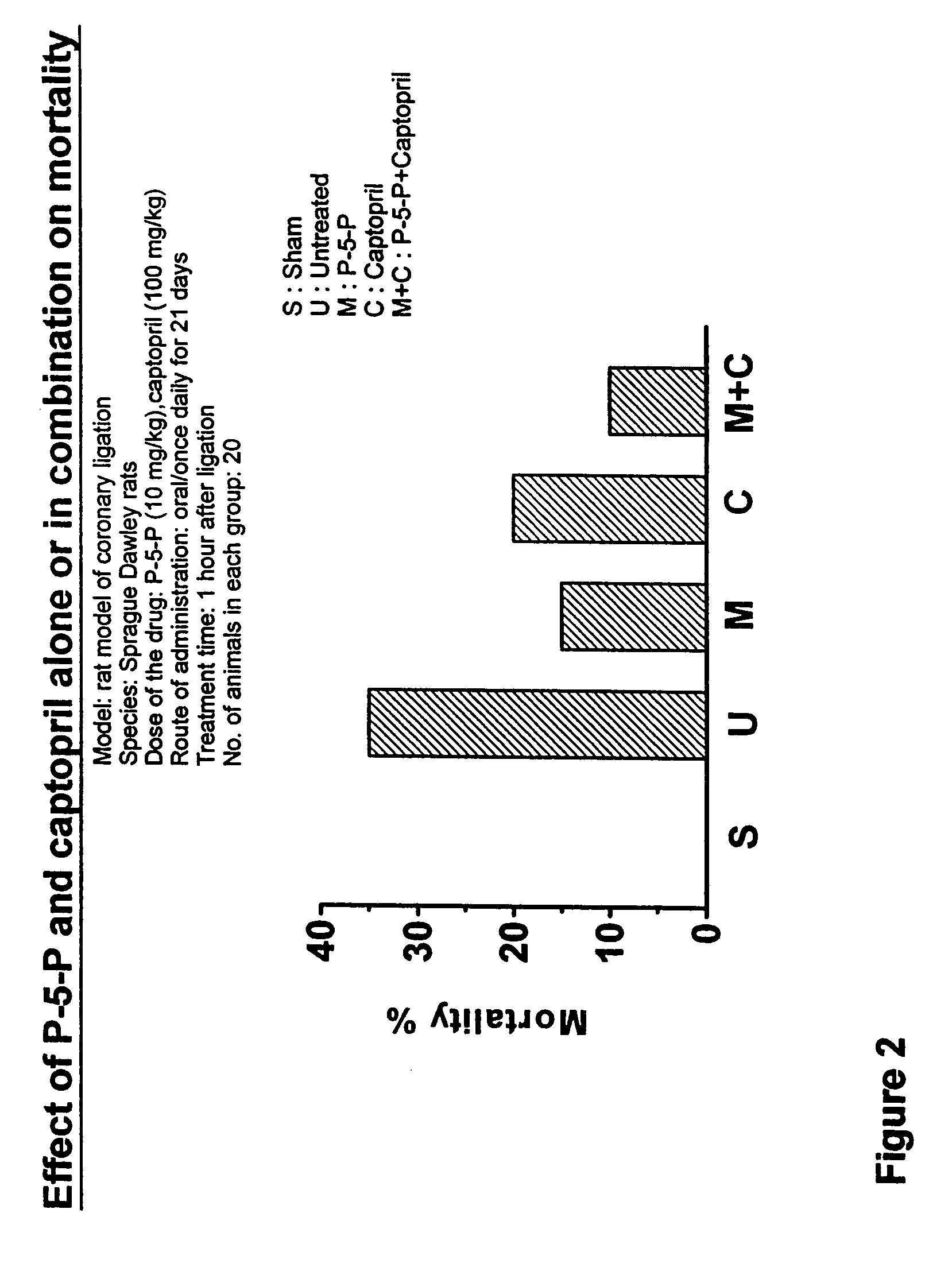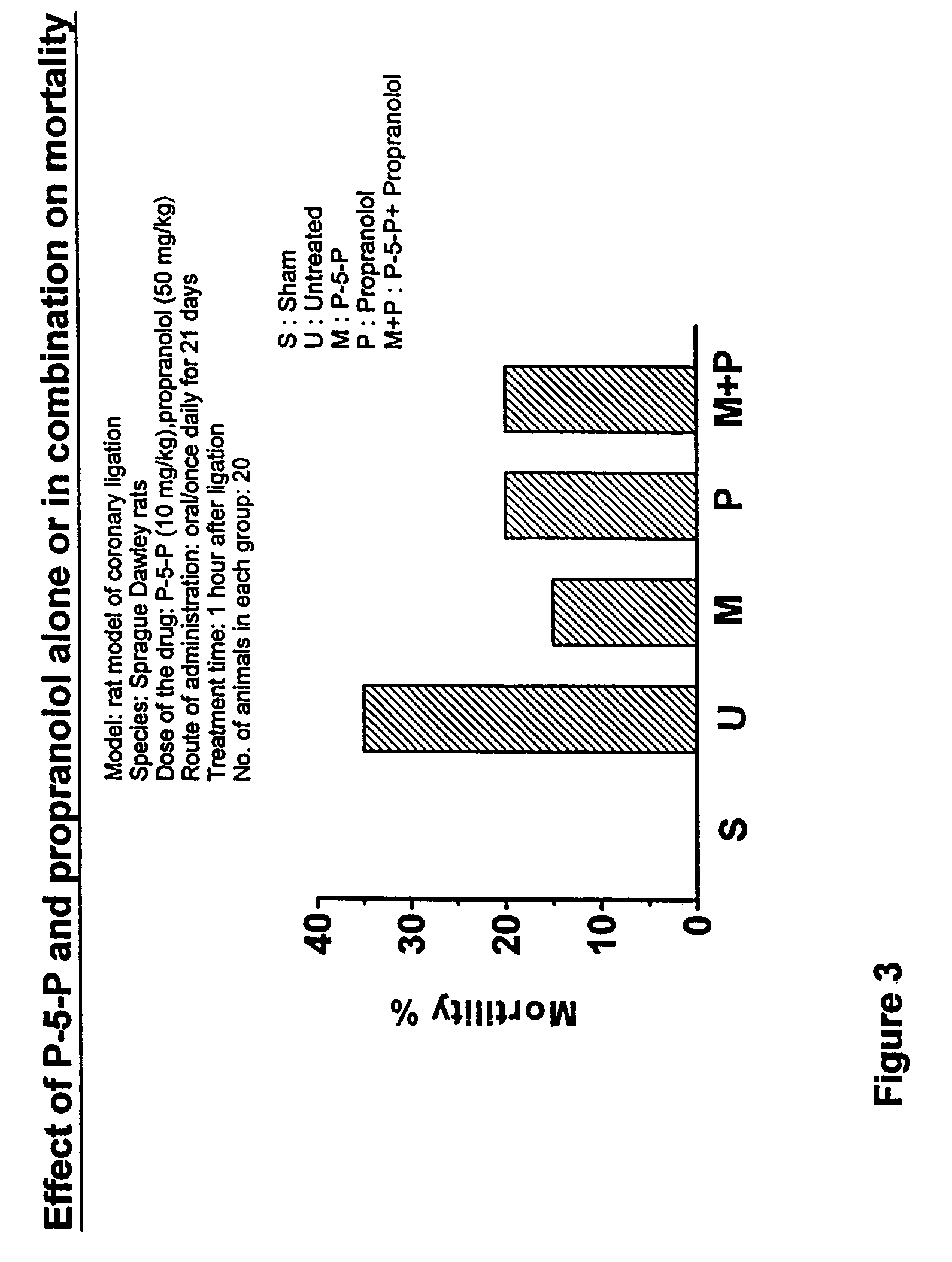Treatment of cardiovascular and related pathologies
a cardiovascular and related disease technology, applied in the field of cardiovascular and related diseases, can solve the problems of pump failure, excess fluid accumulation, and heart failure, and achieve the effects of reducing the ability of the heart to keep up with the workload, and reducing the risk of cardiovascular diseas
- Summary
- Abstract
- Description
- Claims
- Application Information
AI Technical Summary
Benefits of technology
Problems solved by technology
Method used
Image
Examples
example 1
Synthesis of morpholine pyridoxal-4,5-aminal (1-morpholino-1,3-dihydro-7-hydroxy-6-methylfuro(3,4-c)pyridine)
[0117]A mixture of morpholine (20 g) and toluene (100 mL) was stirred and heated using an oil bath set to 100° C. for 15 minutes. Pyridoxal hydrochloride (10 g) was then added and the reaction mixture was stirred at 100° C. for two hours. The reaction mixture was then concentrated by distillation of the toluene and morpholine. The concentrated reaction mixture was washed three times by adding toluene (100 mL) and removing the toluene by distillation. After washing, the residue was dissolved in toluene and filtered, and then hexane was added until precipitation began, at which time the reaction mixture was left overnight at room temperature. Crystals were collected and washed thoroughly with hexane.
[0118]Nuclear magnetic resonance spectroscopy (NMR) and mass spectroscopy confirmed the identity of the synthesized compound. The purity of the compound was analyzed by high perform...
example 2
Synthesis of the 3-toluate of the morpholine pyridoxal-4,5-aminal (1-morpholino-1,3-dihydro-7-(p-toluoyloxy)-6-methylfuro(3,4-c)pyridine)
[0119]Anhydrous powdered potassium carbonate (5 g), acetone (100 mL), and morpholine pyridoxal-4,5-aminal (1-morpholino-1,3-dihydro-7-hydroxy-6-methylfuro(3,4-c)pyridine) (1.11 g, 5 mmoles) were mixed in a nitrogen-cooled, dry flask. The reaction mixture was cooled to between 0 and 5° C. and then p-toluoyl chloride (1.06 g, 6 mmoles) in acetone (20 mL) was added. This mixture was stirred for two hours, followed by filtering out the solid and evaporating the solution to dryness under vacuum. The residue was chromatographed on silica gel using a mixture of ethyl acetate and hexane as solvent.
[0120]The purified solid was analyzed by thin layer chromatography (TLC), NMR, and mass spectroscopy. The purity of the synthesized compound was confirmed by HPLC as described in Example 1.
example 3
Synthesis of the 3-toluate of pyridoxal (2-methyl-3-toluoyloxy-4-formyl-5-hydroxymethylpyridine)
[0121]Anhydrous potassium carbonate (10 g), acetone (100 mL), and pyridoxal hydrochloride (2.03 g, 10 mmoles) were mixed in a nitrogen-cooled, dry flask. The mixture was cooled to between 0 and 5° C. and then p-toluoyl chloride (2.12 g, 12 mmoles) in acetone (20 mL) was added. The reaction mixture was stirred for two hours followed by filtering out the solid and evaporating the solution to dryness under vacuum. The residue was chromatographed on silica gel as described in Example 2.
[0122]The purified solid was analyzed by TLC, NMR, and mass spectroscopy. The purity of the compound was confirmed by HPLC as described in Example 1.
[0123]Alternative to the above-described method, the 3-toluate of pyridoxal is synthesized by reacting the compound of Example 2 with 80% aqueous acetic acid at 60° C. for 30 minutes, and then diluting with water and extracting by ethyl acetate. The ethyl acetate l...
PUM
| Property | Measurement | Unit |
|---|---|---|
| temperature | aaaaa | aaaaa |
| left ventricular end diastolic pressure | aaaaa | aaaaa |
| α-adrenergic receptor | aaaaa | aaaaa |
Abstract
Description
Claims
Application Information
 Login to View More
Login to View More - R&D
- Intellectual Property
- Life Sciences
- Materials
- Tech Scout
- Unparalleled Data Quality
- Higher Quality Content
- 60% Fewer Hallucinations
Browse by: Latest US Patents, China's latest patents, Technical Efficacy Thesaurus, Application Domain, Technology Topic, Popular Technical Reports.
© 2025 PatSnap. All rights reserved.Legal|Privacy policy|Modern Slavery Act Transparency Statement|Sitemap|About US| Contact US: help@patsnap.com



